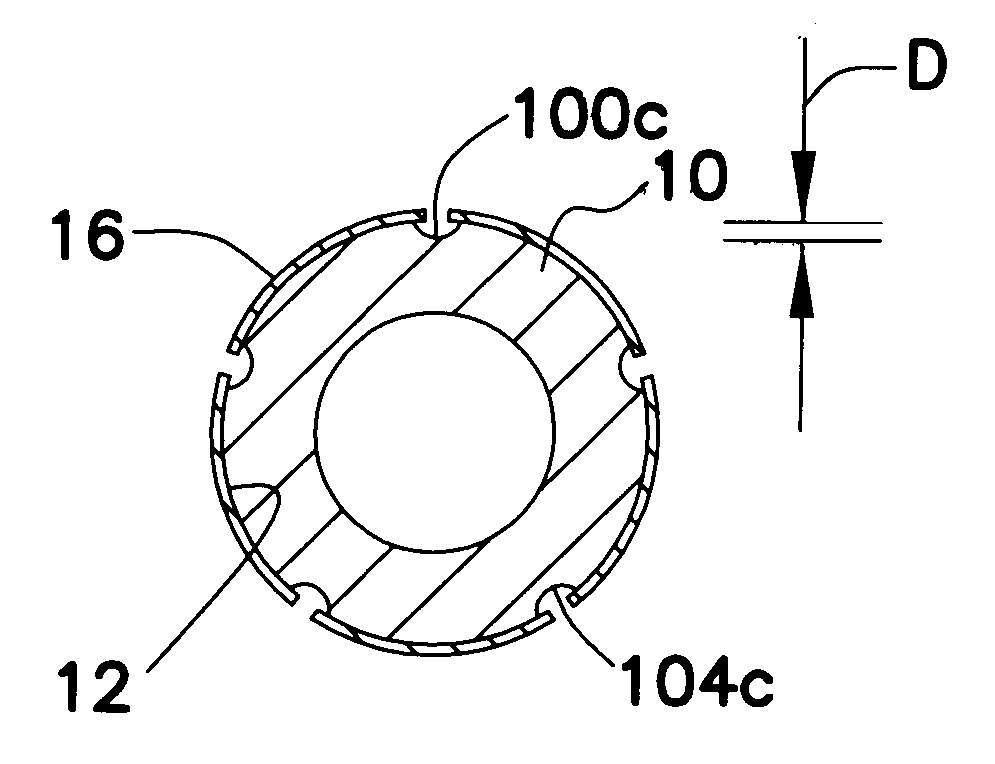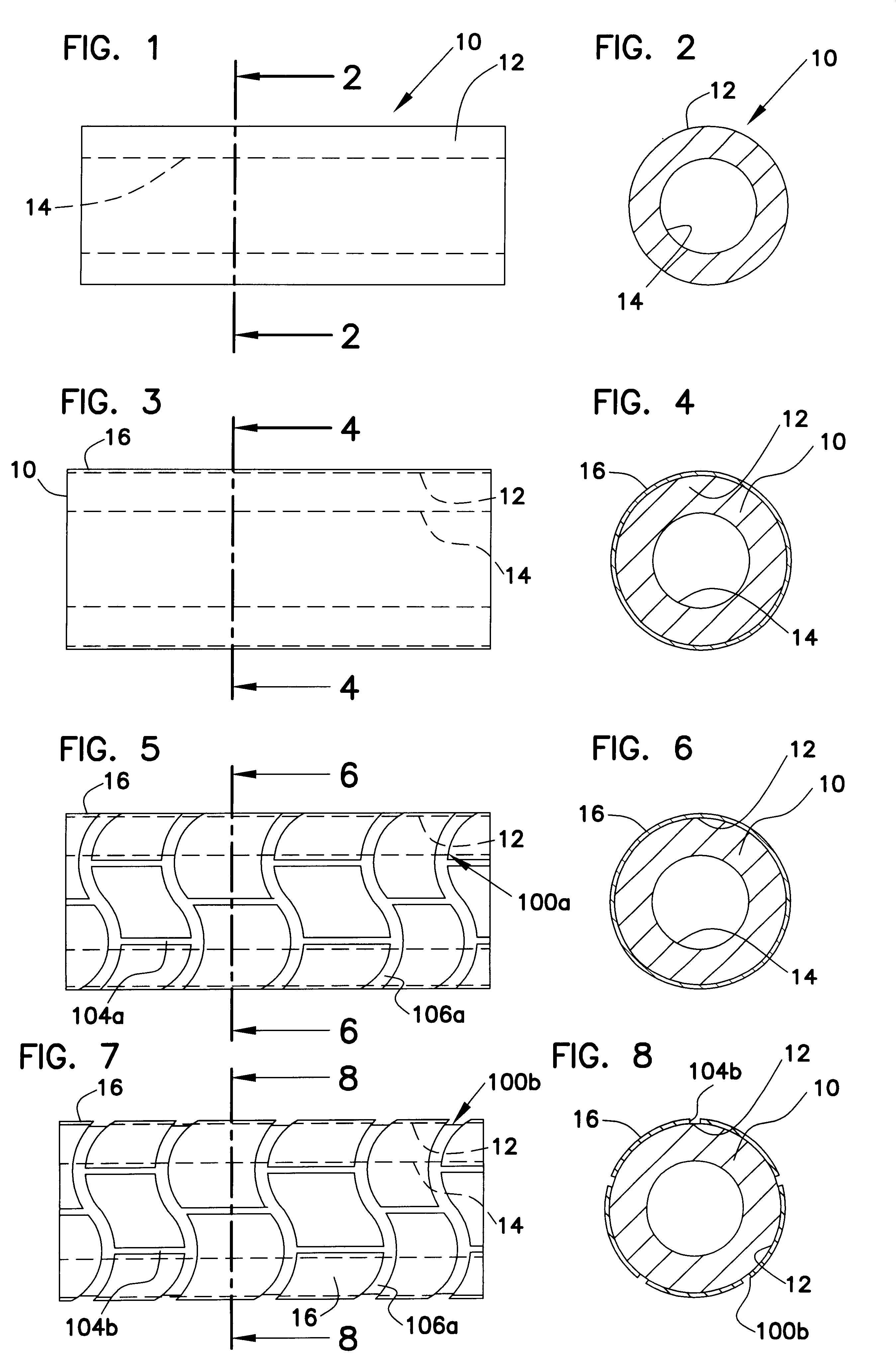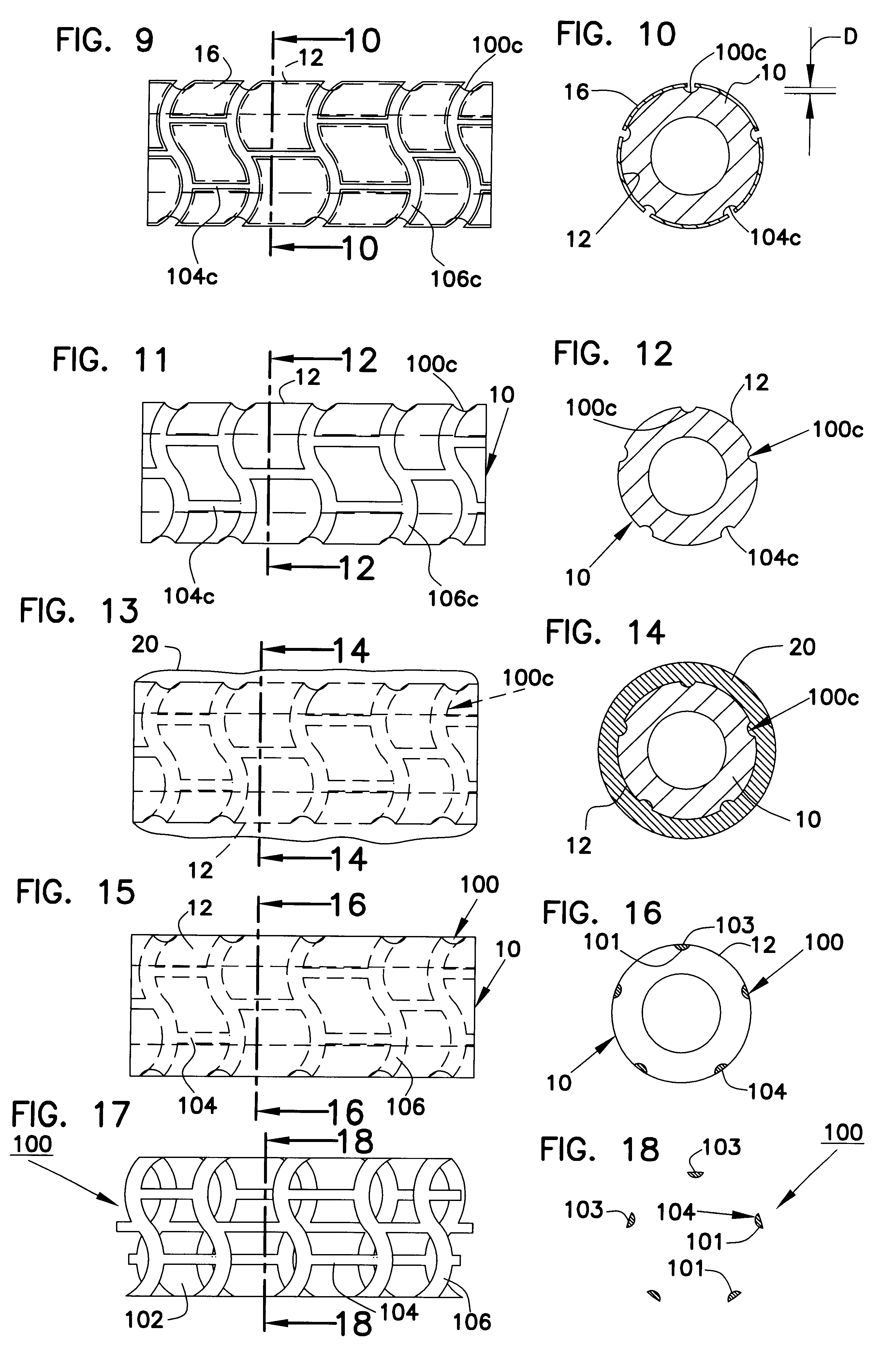Method for manufacturing intraluminal device
a manufacturing method and technology for intraluminal devices, applied in the direction of blood vessels, prostheses, catheters, etc., can solve the problems of extremely small diameter and flexible catheters, extremely difficult to fabricate these devices, and high cost of laser machining
- Summary
- Abstract
- Description
- Claims
- Application Information
AI Technical Summary
Problems solved by technology
Method used
Image
Examples
Embodiment Construction
Referring now to the several drawing figures in which identical elements are numbered identically throughout, a description of a preferred embodiment will now be provided. In providing such a description, specific processes will be described. It will be appreciated that variants (some of which will be later described) of such specifics are intended to be included within the scope of the appended claims.
Referring to FIGS. 1-2, a metal tube 10 is shown for use as a mandrel in forming a tubular intraluminal device according to the present invention. For ease of illustration, the present invention will be described for making a stent 100 (shown in FIGS. 17-18) but is also applicable to the manufacture of other tubular intraluminal devices (e.g., catheters).
By way of example, the stent 100 is a reticulated tube of about 0.050 inch (about 1.25 mm) outside diameter, 0.75 inch (about 19 mm) length and 0.005 inch (about 0.13 mm) wall thickness. It will be appreciated the recitation of such d...
PUM
| Property | Measurement | Unit |
|---|---|---|
| wall thickness | aaaaa | aaaaa |
| length | aaaaa | aaaaa |
| length | aaaaa | aaaaa |
Abstract
Description
Claims
Application Information
 Login to View More
Login to View More - R&D
- Intellectual Property
- Life Sciences
- Materials
- Tech Scout
- Unparalleled Data Quality
- Higher Quality Content
- 60% Fewer Hallucinations
Browse by: Latest US Patents, China's latest patents, Technical Efficacy Thesaurus, Application Domain, Technology Topic, Popular Technical Reports.
© 2025 PatSnap. All rights reserved.Legal|Privacy policy|Modern Slavery Act Transparency Statement|Sitemap|About US| Contact US: help@patsnap.com



